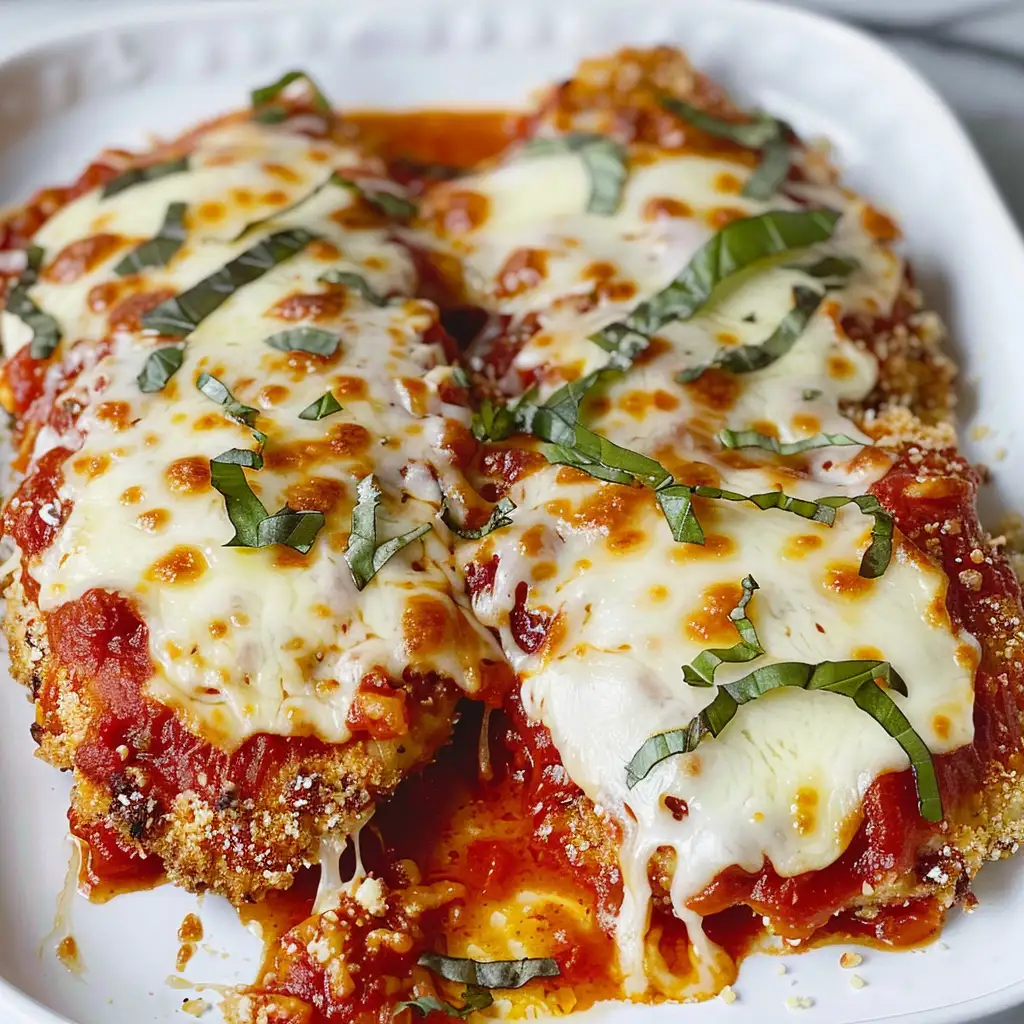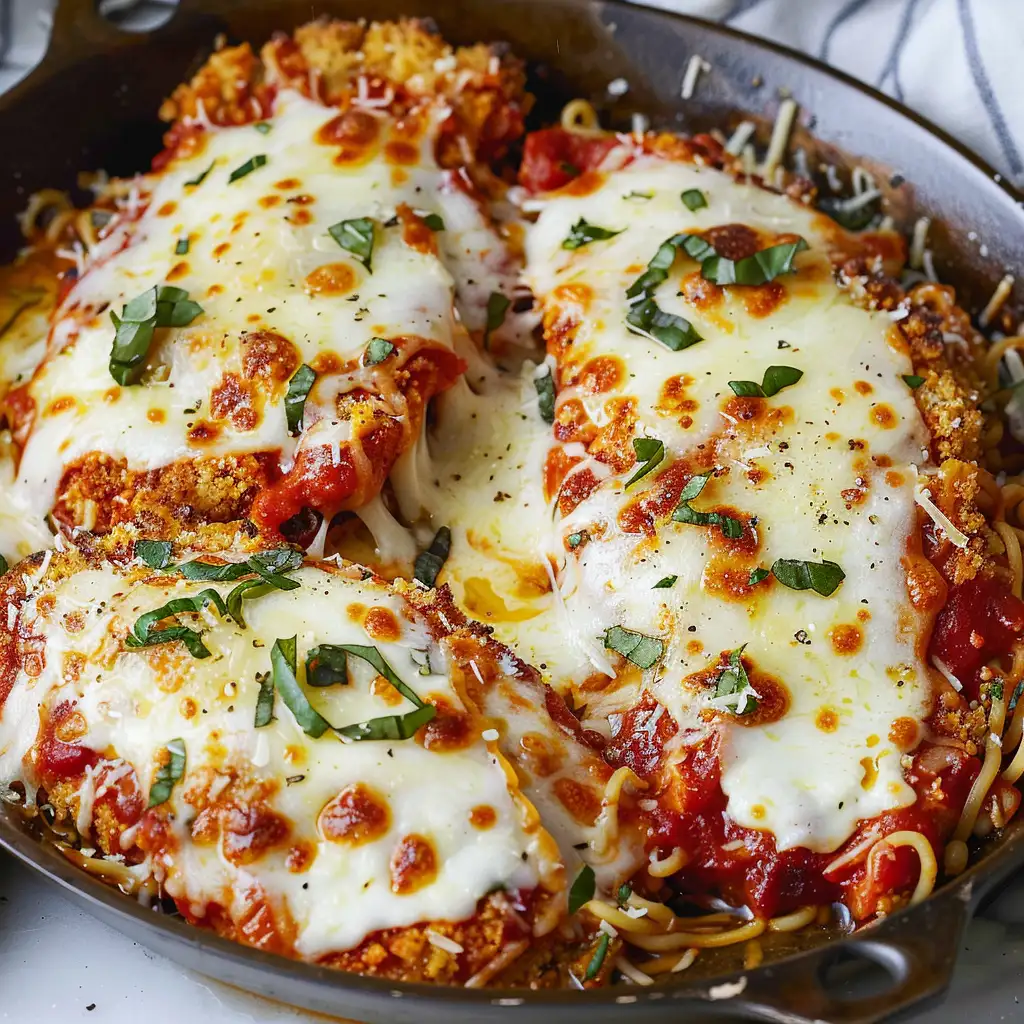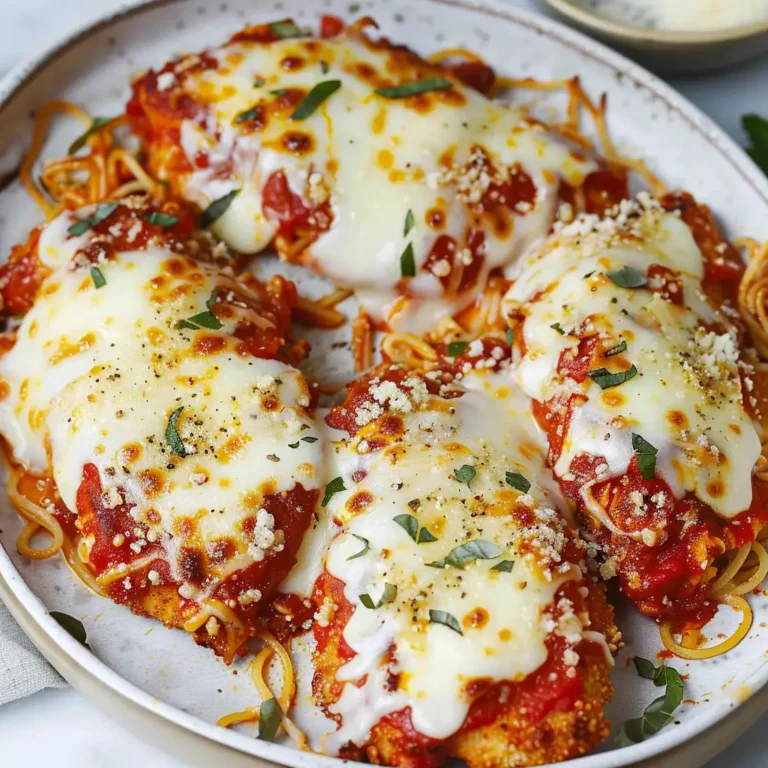Introduction to Chicken Parmesan
Chicken Parmesan, a dish beloved by many, serves as a perfect example of the melting pot of culinary traditions that define American cuisine. Its roots can be traced back to Italian immigrants who brought their cherished recipes to America, adapting them with locally available ingredients. This fusion of cultures has given rise to a dish that, while inspired by Italy, has a distinct identity in the United States.
Origin and Cultural Significance
The origin of Chicken Parmesan is a fascinating tale of culinary adaptation and innovation. Originally inspired by Italian Parmigiana, a dish made with sliced eggplant layered with cheese and tomato sauce, Chicken Parmesan is a testament to the ingenuity of Italian-American immigrants. By substituting eggplant with chicken, they created a dish that became a staple of Italian-American cuisine, reflecting the blend of traditions and the evolution of a new culinary culture.
Chicken Parmesan in America vs. Italy
In comparing Chicken Parmesan in America and Italy, one can observe significant differences in preparation, presentation, and context within the culinary traditions of each country. While Italy favors simplicity and the use of fresh, local ingredients, the American version is more about the generous use of cheese and a heartier presentation. This difference underscores the adaptation of Italian recipes to American tastes and the availability of ingredients, leading to a dish that, while rooted in Italian culinary tradition, has evolved into a uniquely American classic.
The Evolution of Chicken Parmesan
The journey of Chicken Parmesan from a simple adaptation of an Italian dish to a global culinary phenomenon is a testament to the power of cultural exchange. Its evolution is marked by various adaptations and innovations, making it a symbol of the dynamic nature of food traditions.
Historical Background
Chicken Parmesan emerged from the Italian-American communities as a creative take on the traditional Parmigiana. The first documented recipe appeared in a New York newspaper in the 1950s, signaling its acceptance into the American culinary landscape. This adaptation was driven by the abundance of meat in America, a stark contrast to the dietary habits in Italy, where meat was more of a luxury.

Adaptations Outside Italy
- Australia: Down Under, Chicken Parmesan, or “Parmi” as it’s affectionately called, has become a pub food staple, often served with fries and salad. The debate over whether the fries should be placed under the chicken highlights the local variations and preferences.
- Teesside chicken parmo: In the northeast of England, a unique version called the Teesside chicken parmo substitutes the tomato sauce with béchamel and adds a generous topping of cheese. This variant underscores the global influence of Chicken Parmesan and its ability to inspire creativity.
Influence of Italian-American Cuisine
Italian-American cuisine, with dishes like Chicken Parmesan, illustrates the immigrant experience — a blend of tradition and adaptation. This cuisine has not only enriched the American food landscape but has also showcased the flexibility of Italian culinary traditions, as they are reimagined in new contexts and cultures. The popularity of Chicken Parmesan, with its variations from America to Australia and beyond, is a testament to the universal appeal of Italian flavors, adapted to suit local tastes and ingredients.
The history of Chicken Parmesan provides deeper insight into how this dish has evolved over the years, reflecting broader trends in cuisine and culture. The journey of Chicken Parmesan from a simple family meal to a beloved global dish highlights the dynamic interplay between tradition and innovation in the culinary world.
Preparing Chicken Parmesan
Preparing Chicken Parmesan is a culinary journey that marries simplicity with flavor, resulting in a dish that’s both comforting and utterly satisfying. The process involves a few key steps, from breading the chicken to layering it with sauce and cheese, each adding its unique touch to the final dish.
Step-by-step Cooking Process
- Prepare the Chicken: Begin by flattening chicken breasts to an even thickness. This ensures they cook uniformly.
- Bread the Chicken: Dip each chicken breast first in flour, then beaten egg, and finally, seasoned breadcrumbs. This layering gives Chicken Parmesan its iconic crispy exterior.
- Fry the Chicken: Briefly fry the breaded chicken in olive oil until golden brown. This step is crucial for achieving the perfect crust.
- Assemble the Dish: Place the fried chicken in a baking dish, top with marinara sauce and a generous amount of mozzarella and Parmesan cheese.
- Bake: Bake in a preheated oven until the cheese is bubbly and golden.
Tips for the Perfect Crust and Sauce
- For the Crust: Ensure your oil is hot enough before adding the chicken. A good test is to sprinkle a bit of flour into the oil; if it sizzles, it’s ready.
- For the Sauce: Opt for homemade marinara sauce where possible. It’s richer and more flavorful. Simmer it with herbs like basil and oregano to enhance its taste.
Side Dishes and Serving Suggestions
- Serve Chicken Parmesan with spaghetti or your choice of pasta on the side, lightly tossed in the same marinara sauce.
- A crisp green salad or steamed vegetables make for a refreshing contrast to the rich, cheesy chicken.
Cooking Techniques and Tips
Cooking Chicken Parmesan involves a choice between two primary methods: breading and frying, or baking. Each technique brings its own set of flavors and textures to the dish.
Breading and Frying vs. Baking
- Breading and Frying: This traditional method involves coating the chicken in breadcrumbs and frying it until golden. It results in a crispy exterior and tender interior. However, it’s also richer and more calorie-dense.
- Baking: Baking is a healthier alternative. While it might not provide the same level of crispiness as frying, it’s easier and less messy. You can achieve a decent crust by broiling the chicken for the last few minutes of cooking.
Sauce Preparation and Cheese Choices
- Sauce: A robust, herby marinara sauce is key. Consider simmering your sauce with a bay leaf and a splash of red wine for depth of flavor.
- Cheese: Use high-quality mozzarella and Parmesan. The mozzarella should be thinly sliced or shredded for even melting, while a fresh grating of Parmesan adds a salty, nutty layer to the dish.

How to Avoid Common Mistakes
- Don’t Overcook the Chicken: Overcooking can make the chicken tough. Remove it from the oven as soon as the cheese is golden and bubbly.
- Avoid Soggy Breading: Ensure the sauce is not too watery and don’t over-sauce the chicken. A thick, rich sauce adheres better and keeps the breading crisp.
For those interested in a deeper dive into perfecting their Chicken Parmesan, exploring How to cook the perfect Chicken Parmesan can offer further insights and variations to try. Mastering this dish is not only about following steps but also about understanding the harmony between its components – the crispiness of the chicken, the tanginess of the sauce, and the gooeyness of the cheese.
Serving and Presentation
The serving and presentation of Chicken Parmesan can significantly influence its enjoyment. Traditional methods focus on simplicity and comfort, while modern twists can add a creative flair to this beloved dish.
Traditional Plating vs. Modern Twists
- Traditional Plating: Typically, Chicken Parmesan is served over a bed of spaghetti, draped with more marinara sauce and sprinkled with fresh basil or parsley for a pop of color.
- Modern Twists: Chefs are getting creative, presenting deconstructed versions or using the chicken as a sandwich filling. Some even experiment with different cheeses or add a spicy kick to the sauce.
Pairing with Wines and Beverages
- A medium-bodied red wine, like Chianti or Merlot, pairs beautifully with the rich flavors of Chicken Parmesan.
- For a non-alcoholic option, sparkling water with a squeeze of lemon complements the dish’s richness.
Cultural Debates
- A notable debate in Australia and beyond is whether fries should be served under or beside the chicken. This conversation highlights the dish’s global reach and the local adaptations that make it unique.
Health and Nutrition
Understanding the nutritional breakdown of Chicken Parmesan helps in appreciating the dish and exploring healthier alternatives.
Nutritional Breakdown
- Traditional Chicken Parmesan can be calorie-dense, primarily due to frying and the generous use of cheese.
Making Chicken Parmesan Healthier
- Opting for baking instead of frying reduces the dish’s oil content.
- Using part-skim mozzarella and a sprinkle of Parmesan can cut down on fat without compromising flavor.
Gluten-Free and Low-Carb Versions
- For a gluten-free version, use almond flour or a gluten-free breadcrumb alternative.
- A low-carb Chicken Parmesan can be achieved by skipping the breading and serving over zucchini noodles instead of pasta.
For those interested in making a healthier version of this classic dish, resources like Nutritional breakdown of Chicken Parmesan provide valuable insights into creating a meal that’s not only delicious but also fits into a balanced diet. Balancing tradition with modern dietary preferences allows everyone to enjoy Chicken Parmesan, regardless of their nutritional goals.

FAQs
Frequently asked questions about Chicken Parmesan reveal the dish’s versatility and the curiosity it inspires among enthusiasts. Here, we address some of the most common inquiries.
What’s the difference between Chicken Parmesan and Parmigiana?
- Chicken Parmesan and Chicken Parmigiana essentially refer to the same dish in different regions. The term “Parmesan” is more commonly used in American English, while “Parmigiana” refers to the Italian naming, highlighting the dish’s origins and its key ingredient, Parmesan cheese.
Can Chicken Parmesan be made ahead of time?
- Yes, Chicken Parmesan can be prepared in advance. Assemble the dish without baking, cover, and refrigerate. When ready to serve, bake until the cheese is bubbly and golden. This method ensures the chicken remains moist and the flavors meld beautifully.
Best cheese for Chicken Parmesan?
- The best cheeses for Chicken Parmesan are freshly grated Parmesan and high-quality mozzarella. Parmesan adds a salty, nutty flavor, while mozzarella offers creaminess and a satisfying melt.
Variations in serving across different countries?
- Australia: Often served with a side of fries and salad, with debates on whether fries should be under or beside the chicken.
- England (Teesside): Known as “Chicken Parmo,” it’s topped with béchamel sauce and cheese, a regional twist that showcases the dish’s adaptability.
For those looking to dive deeper into the nuances of Chicken Parmesan and its regional variations, exploring resources like The history of Chicken Parmesan can provide a wealth of information. Understanding these differences not only enhances appreciation for the dish but also inspires experimentation with recipes, allowing for a personalized touch in each serving.

